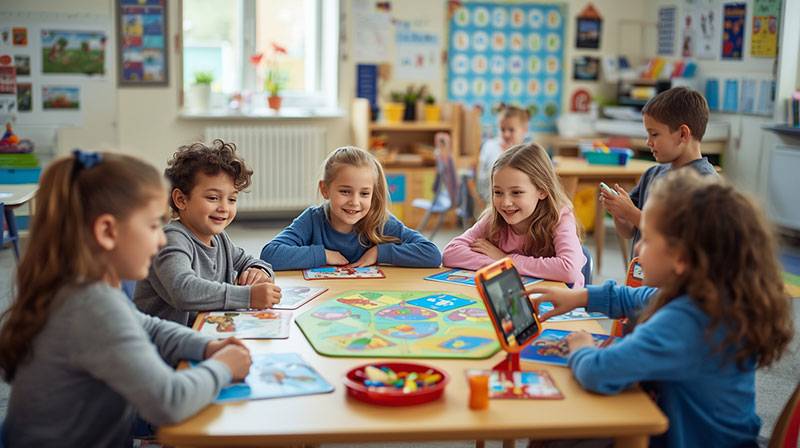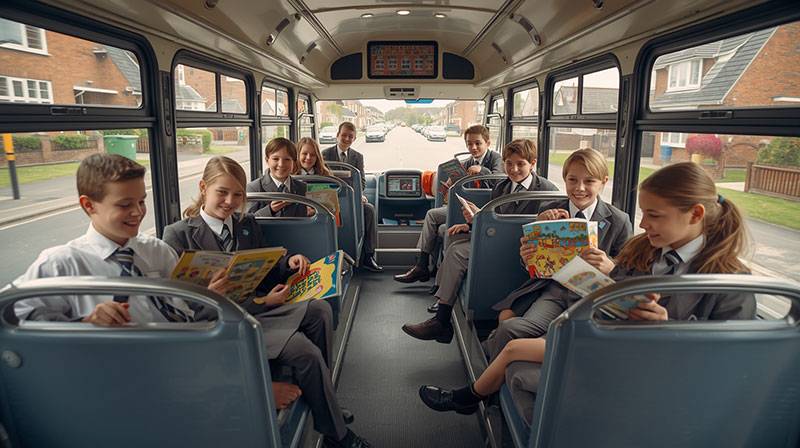Fun and Educational Games for Kids: Play, Learn, and Grow Together
1. Introduction: Why Games Are Good for Learning and Growing
I wish someone had told me this when my kids were toddlers: games aren’t merely for entertainment. They’re working hard behind the scenes.
Negotiation occurs when siblings fight about turns. Even the wild outdoor games where someone always cries? These teach conflict resolution, believe it or not. Over the past decade, children’s games have changed drastically. Though board games and backyard tag are still important, we’ve moved on. Interactive apps and websites combine learning with entertainment. Kids solve math problems to save characters, learn language through storytelling games, and develop critical thinking abilities while playing challenges. This works because youngsters don’t realize they’re learning. Before his teacher taught fractions, my nephew learned via a pizza-making game. He learned by playing, not studying.
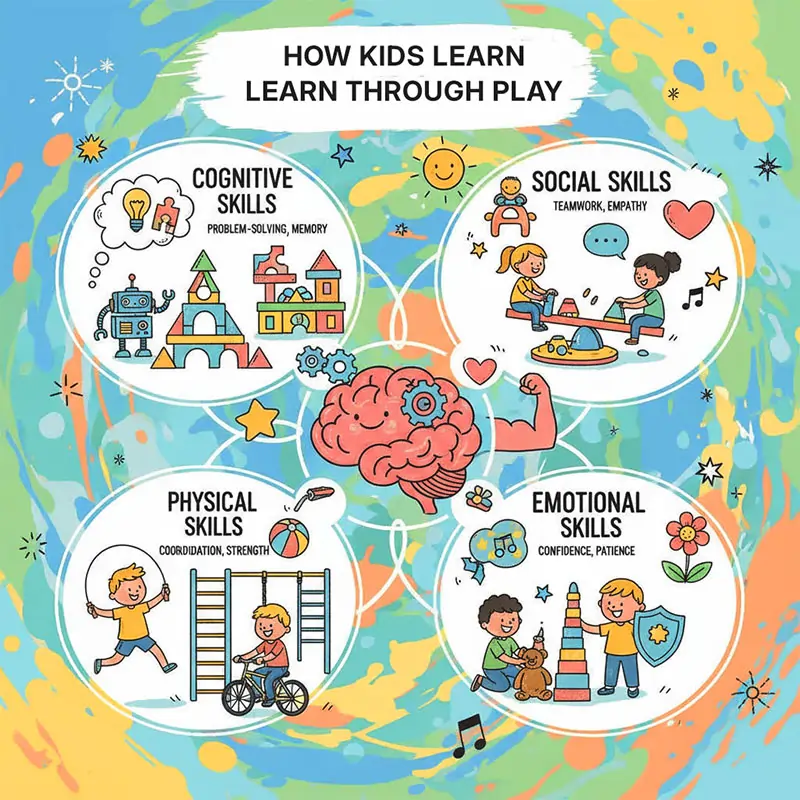
2. Games that are played indoors, outdoors, and Digital games.
One style of play won’t do. I promise kids need diversity or they’ll burn out quickly.
| Type of Game | Examples | Skills Developed | Recommended Age |
| Indoor Games | Puzzles, board games, Lego, hide & seek | Logic, patience, fine motor skills | 3–12 years |
| Outdoor Games | Tag, hopscotch, football, treasure hunt | Teamwork, coordination, endurance | 4–14 years |
| Digital Games | Coding games, math apps, language games | Tech literacy, creativity, problem-solving | 6–15 years |
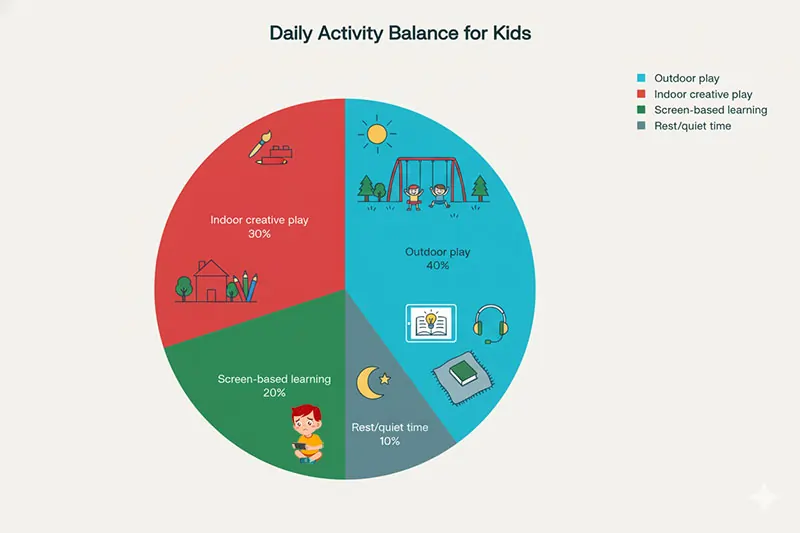
Indoor games: Indoor games are vital on rainy days. Even though losing causes tears, board games teach patience and strategy. Puzzles improve logic. Lego with blocks? Engineering and spatial awareness disguised as enjoyment. My daughter spent an afternoon building a marble run that came crashing down, but she learnt more from that failure than from any lecture I could deliver.
Outdoor games: Get people moving and talking to each other. Running till they’re breathing, climbing scary things, and scraping their knees are necessary for kids. Tag teaches quick decision-making and spatial awareness despite its simplicity. Team sports like soccer and basketball promote cooperation more than apps. My youngster is different after an hour of running outside versus being inside.
Digital Games: The right digital games do what traditional play can’t. When chosen wisely, interactive feedback, adaptive difficulty, and visual models of complex topics succeed. Key word: “carefully.” Most kid-targeted games are junk meant to sell products or collect data.
3. Benefits of Educational Games
Educational games go beyond fun. They can be multi-level development tools if chosen properly.
Mind Development
Puzzles, math, and logic games improve attention, memory, and problem-solving. Kids who fear numbers can benefit from math apps. Math is no longer scary—it’s a tool to beat the level. I’ve seen my daughter create memory game systems. Methodical guessing has replaced haphazard guessing.
Language and Communication
Story-based applications and word games boost vocabulary faster than flashcards. Why? Context counts. That word sticks because kids need it to progress. Even simple multiplayer games need youngsters to communicate—explain techniques, negotiate rules, and persuade. That’s real-time communication development.
Skills for social and emotional health
One overlooked benefit is that games teach safe emotional regulation. Kids learn to tolerate loss, which is hard. When patience is low, they practice waiting. When luck fails, they’re disappointed. Games offer numerous opportunities to practice these difficult emotional concepts.
Physical Development
Simple yet important—active outside play is healthy for youngsters. Running, jumping, and team sports improve coordination, balance, and cardio. That cannot be replaced by an app.
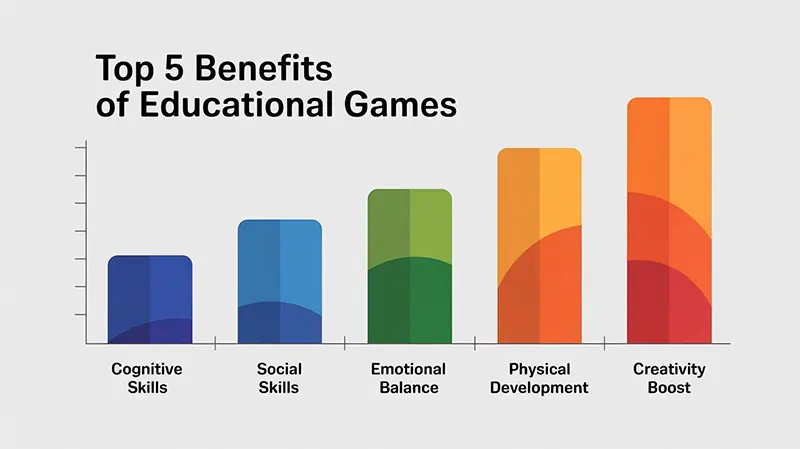
4. Best Online Games for Kids
Educational games abound online. Most are mediocre. Deliverable categories are here.
Logic and math games
CoolMathGames and Prodigy make math fun. Kids solve math problems to advance in stories or get new features. Their attention is on the story that they neglect to calculate. Math Blaster has been around long because it works—kids unwittingly practice multiplication tables while watching the space mission.
Strategy and Puzzle Games
These games need forethought. Cut the Rope and kid-friendly Sudoku teach cause-and-effect. What if I do this? That failed, how about that? Children learn to speculate, explore, and plan several steps ahead.
Science and Exploration Games
National Geographic Kids and NASA Kids’ Club are goldmines. Interactive ecology, space, and scientific experiment simulations spark curiosity. My son once understood more about Mars rovers than grownups.
Word and Language Games
PBS Kids and Starfall simplify phonics, grammar, and reading comprehension with colorful exercises. They make reading fun, not homework. My youngest learned all her letter sounds from these platforms before kindergarten.
Art and Creativity Games
For free, kids can design on Toca Boca without rules or “winning.” They imagine people, settings, and stories. This open-ended play fosters creativity. Exploration and expressiveness, no right answer.
STEM and Coding Games
Kids may make their own games, animations, and tales on sites like Code.org and Scratch. This makes programming fun and easy to understand.
Top Online Games for Children by Category
| Category | Popular Platform/Game | Age Group | Skill Focus |
| Math & Logic | Prodigy, CoolMathGames | 6–12 | Problem-solving |
| Puzzles | Cut the Rope, Sudoku Junior | 5–10 | Reasoning |
| Science | NASA Kids, PhET Simulations | 8–14 | Exploration |
| Language | Starfall, ABCya | 4–10 | Vocabulary |
| Art & Creativity | Toca Boca, Drawing Games | 4–12 | Imagination |
| Coding | Scratch, Code.org | 8–15 | Logical thinking |
5. Advice for Parents: How to Balance Screen Time and Play Time
Digital games may teach, but balance is key. Setting appropriate boundaries and fostering diverse play is up to parents.
1. Limit Time
The American Academy of Paediatrics advises one hour every day for 2–5-year-olds and two hours for older children (excluding schooling). These are recommendations, not laws, but good beginning points.
2. Promote Physical Play
Avoid replacing outdoor activity with screens. Our unbreakable rule: outdoor time before screen time. Physically active youngsters handle screen time ending better.
3. Pick quality over quantity
Twenty focused minutes with a difficult instructional game always beats two hours of lazy consumption. Pick and choose. Highly selective. Look for games with clear learning objectives, age-appropriate content, and few ads.
4. Play Together
It changed everything for us. Playing games with your kids creates bonds, promotes trust, and shows what they’re learning. Additionally, some of these games are fun.
5. Set up “Tech-Free” Zones
To keep healthy social connection, don’t use screens during meals, in bedrooms, or at family activities.
6. Rules for safe and age-appropriate gaming
When kids start playing online games, safety is the most important thing. Not all platforms put privacy and acceptable content first, Parents must be alert since not all sites value privacy and acceptable content.
? Safety Checklist for Parents
| Safety Measure | Why It Matters |
| Enable parental controls | Limits access to inappropriate content |
| Use kid-safe browsers (Google Kids Space.) | Provides filtered, ad-free environments |
| Check privacy settings | Protects personal information |
| Avoid in-app purchases | Prevents accidental spending |
| Discuss online etiquette | Teaches respectful communication |
? Age-Appropriate Recommendations
| Age Group | Game Type | Focus Area |
| 3–5 years | Color, shape, and matching games | Basic recognition |
| 6–8 years | Math, reading, and logic games | Foundational learning |
| 9–12 years | Strategy, coding, and science games | Skill-building |
| 13+ years | Simulation and creativity platforms | Advanced learning & design |
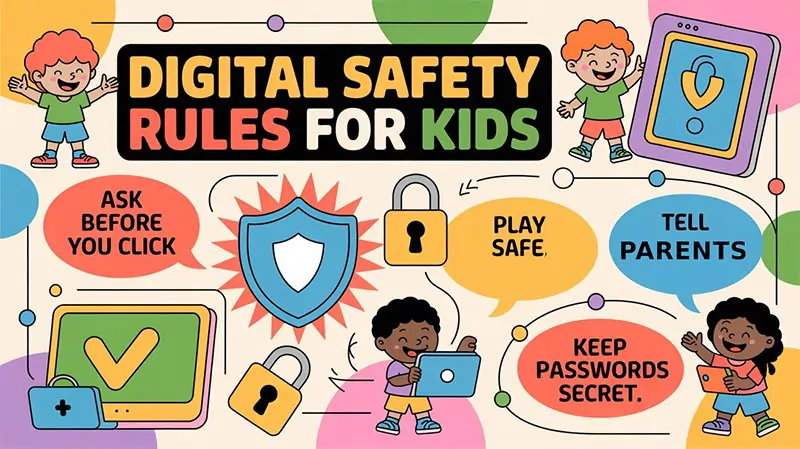
7. Kids’ Game FAQs
Q1: What are the best free online game sites for kids?
A: KidsWorldFun, PBS Kids, National Geographic Kids, ABCya, and CoolMathGames are good starting locations. They’re mostly free, have little advertising, and are instructive.
Q2: How do games teach kids?
A: Educational games make abstract concepts visual and participatory. Kids can better understand difficult concepts when they can change them, get rapid feedback, and experiment. They enjoy learning math, language, and science.
Q3: Are online games kid-safe?
A: Most are safe if chosen properly. Verify age-appropriateness, check for ads or in-app purchases, and initially monitor your kids’ play.
Q4: Do games help focus?
A: Yes. Puzzle and problem-solving games that involve strategic thinking teach kids patience and focus. Choosing games that challenge kids without frustrating them is crucial.
Q5: How long should youngsters play games?
A: We recommend 1-2 hours of screen-based games each day, balanced with outdoor play, creative pursuits, and family time. Quality trumps deadlines.
Q6: How are instructional and entertainment games different?
A: Educational games have designed-in learning objectives. Entertainment games are for fun, not instruction. Both are useful, but instructional games are more developing.
8. Conclusion and Resources
In a world full of passive entertainment and digital diversions, balanced, instructive, and truly enjoyable play makes a huge impact. With games that suitably challenge them, you can help your children learn, dream, and explore. Every game has the potential to be a creative exercise, a learning experience, or an opportunity to develop resilience. Recall that there is no such thing as perfect balance. On some days, play will largely take place outside. On other days, the weather or other conditions require more time spent indoors. That is typical. The cumulative trend over weeks and months—rather than reaching optimal proportions every day—is what counts.
Recommended Free Learning and Gaming Sites for Kids:
| Platform | Focus Area | Website Link |
| ABCya | Math, reading, typing | abcya.com |
| Prodigy | Math and problem-solving | prodigygame.com |
| PBS Kids | Educational games and shows | pbskids.org |
| Starfall | Language and reading | starfall.com |
| Code.org | Coding and computer science | code.org |
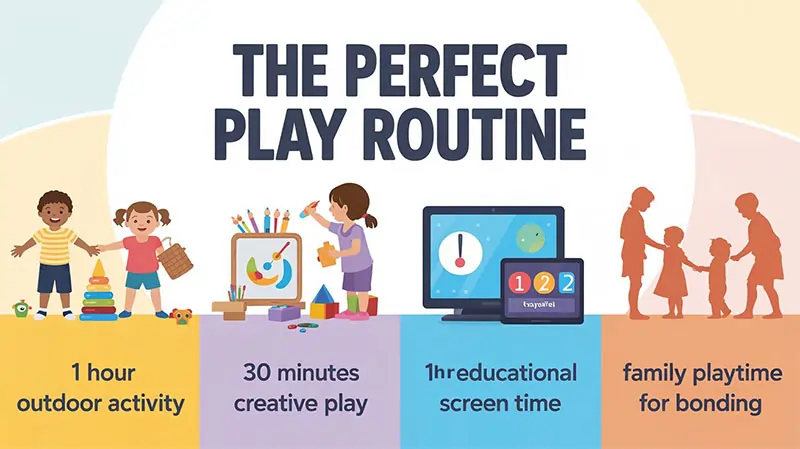
Final Thoughts
The correct kind of play—balanced, educational, and fun—can make a big impact in a world full with digital distractions. Every game is a chance for your kids to learn, imagine, and explore, so encourage them to do so.

